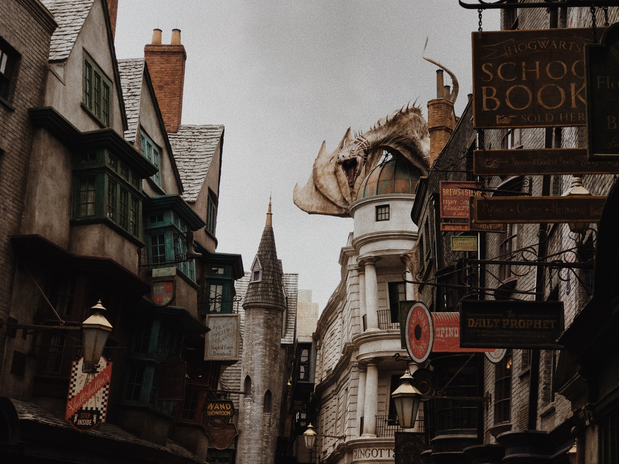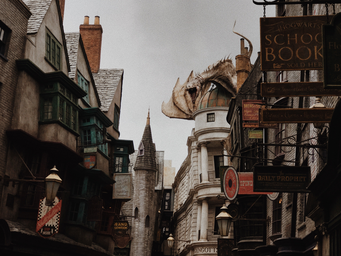As an English major and a writer, I am always considering my role in the literary world. One of the more persisting debates I’ve experienced throughout my education involves a 1967 essay by Roland Barthes, a famous literary critic and theorist. The piece in question, titled, “The Death of the Author,” debates the degree to which the originator of any work can have authority over the meaning and interpretation of it. Barthes largely denies authorial intent as a means of understanding and instead favors authority on the part of the reader. He argues that readers should be able to contextualize the piece as they see fit, which sometimes includes actively disregarding the author’s own context. In a rather dramatic line, Barthes posits, “the birth of the reader must be at the cost of the death of the Author.”
I could spend all day debating the merits of this perspective, and it’s certainly one that I can’t entirely agree with. After all, authorship is an inherently political discussion, and denying identity can become especially problematic in the case of voices traditionally ignored. For example, reinterpreting an F. Scott Fitzgerald novel outside the scope of his original context can be a beneficial exercise, but the same can’t be said for ignoring the racial history and context of a Black author. So, while I see the value in reinterpreting less relevant or even problematic and outdated works in a modern context, this process can also completely erase identities, and thus needs to be used with some degree of discretion.
However, in the case of authors like J. K. Rowling, Barthes might have had a point. To start, I’d like to make it clear that I do not at all support Rowling. Her transphobic comments, along with a history of racially stereotypical and misogynistic characters, are entirely opposite of the values I hold dear, and the only reason I continue to enjoy Harry Potter is the knowledge that her characters would in fact disapprove of her beliefs. With that being said, Rowling is a perfect case study in authorial intent.
The original Harry Potter series had zero explicitly LGBTQ+ characters. Despite the retroactive decision to treat Dumbledore as gay—I’m in the school of people who can’t stand Dumbedore, so this attempt at tokenism really didn’t work on me anyway—the books were largely lacking in representation of sexuality. That is, of course, if we look only at the diverse sexualities Rowling herself acknowledged. By reading the series, I and many others have identified several characters as queer, including the titular protagonist.
Harry Potter is bisexual. This is a statement that I accept as completely canon. His descriptions of male characters throughout his childhood exist as the most compelling piece of proof. First, Harry meets the older Bill Weasley in Goblet of Fire and talks about him as follows, “Bill was—there was no other word for it—cool. He was tall, with long hair that he had tied back in a ponytail. He was wearing an earring with what looked like a fang dangling from it. Bill’s clothes would not have looked out of place at a rock concert, except that Harry recognized his boots to be made, not of leather, but of dragon hide.”
Here, we see fourteen-year-old Harry, a usually very oblivious narrator, pay distinctly close attention to the appearance and clothes of Bill. He calls him cool—an all-encompassing term that could be innocuous, but to many reads as a young boy expressing a crush in the only way he knows how. Several pages later, Harry describes Cedric Diggory, a quidditch rival, by saying, “Cedric Diggory was an extremely handsome boy of around seventeen.” Once again, Harry is very aware of the attractiveness of another character, this one being a student Harry is posed to be rivals with. Soon after, Harry describes his canonical love interest Cho Chang as “a very pretty girl,” but one can’t help but notice the parallels between how Harry sees these two.
Don’t get me wrong—I’m quite certain that Rowling did not intend these passages to be interpreted as attraction. I believe that they came about only as gaps in her writing: Rowling’s own identity as a heterosexual woman shining through Harry’s narration in the portrayal of secondary male characters. However, whether she intended it or not, the textual evidence is there, and Harry Potter is a bisexual character to many readers.
Harry isn’t the only character that can be read as queer. From the moment Prisoner of Azkaban was published, audiences noticed an undeniable connection between Sirius Black and Remus Lupin. The two appeared to many as reunited lovers—interestingly enough, actors Gary Oldman and David Thewlis actually played the roles with this angle in mind.
Rowling did not want these characters to be interpreted as having any sort of romantic relationship. She attempted to sue online writers of “wolfstar” fanfiction, and though much of her reasoning is speculation, some believe that Black’s death and Lupin’s eventual marriage to Nymphadora Tonks, a female character thirteen years his junior, were reactionary measures meant to diminish a queer reading of the two men.
Still, Remus Lupin is a deeply queer-coded character. Though Rowling’s loose allegory between lycanthropy and the AIDS epidemic was abysmally-handled, there’s no denying the symbolic nature of Lupin’s character. His time spent trying to hide his true self and facing backlash when exposed is a distinctly queer story, and one that many readers instantly resonated with.
Lupin and Black’s relationship seemed obviously intimate. Though some interactions could have been written off simply as close friendship, as both were members of the “Marauders” friend group along with James Potter and Peter Pettigrew, many didn’t see it that way. Black was often rebellious to an unacceptable extreme, but in an Order of the Phoenix scene he immediately listened when Lupin told him to sit down during an argument. The two stayed together at Grimmauld Place for a period of time—an intentional move after Lupin actively moved from his previous residence. In a flashback witnessed by Harry, there is the following passage:
With another shock of excitement, Harry saw Sirius give James the thumbs-up. Sirius was lounging in his chair at ease, tilting it back on two legs. He was very good-looking; his dark hair fell into his eyes with a sort of casual elegance that neither James’s nor Harry’s could ever have achieved, and a girl sitting behind him was eyeing him hopefully, though he didn’t seem to have noticed. And two seats along from this girl – Harry’s stomach gave another pleasurable squirm – was Remus Lupin.
Not only do we once again see Harry noting the attractiveness of a male character, but we also see a fifteen-year-old Sirius Black paying no attention to a girl who is interested in him. Then, as if answering the question of why Black isn’t noticing her, we see Lupin just a few seats away.
Though I’m not at all a fan of Severus Snape, he also, albeit somewhat sarcastically, agrees with my interpretation in a line from the film adaptation of Prisoner of Azkaban saying that Black and Lupin were, “quarreling like an old married couple.” While it’s painfully obvious that Rowling was against a queer reading of these characters, the textual evidence is once again there.
In fact, her adamant denial of the relationship actually serves as a hindrance to her writing. Lupin and Black are posed as narrative parallels. They are quite literally the moon and the stars, with Lupin as the former due to his lycanthropy and Black as the latter due to his noble family’s penchant for naming children after constellations. Their stories and motivations can not exist without each other, yet all of these seemingly clever connections are left unfulfilled and meaningless. What could have been remembered as one of the most tragic love stories of modern literature is now only able to be developed outside of canon.
With all of this in mind, what does that mean going forward? Personally, I don’t let Rowling’s prejudices and inhibitions inform my reading. These books were such an important part of my childhood, and I’d be rewriting history if I said that they weren’t influential in my passions as a writer. However, they are important to me because of what I make them. They mean what I want them to. Seeing Harry as bisexual and Lupin and Black as lovers are choices I’ve made, but they’re also largely rooted in the textual evidence that Rowling provided. No matter what she intended, or what she still refuses to acknowledge, the text speaks for itself, and that’s a power she can not take away.


